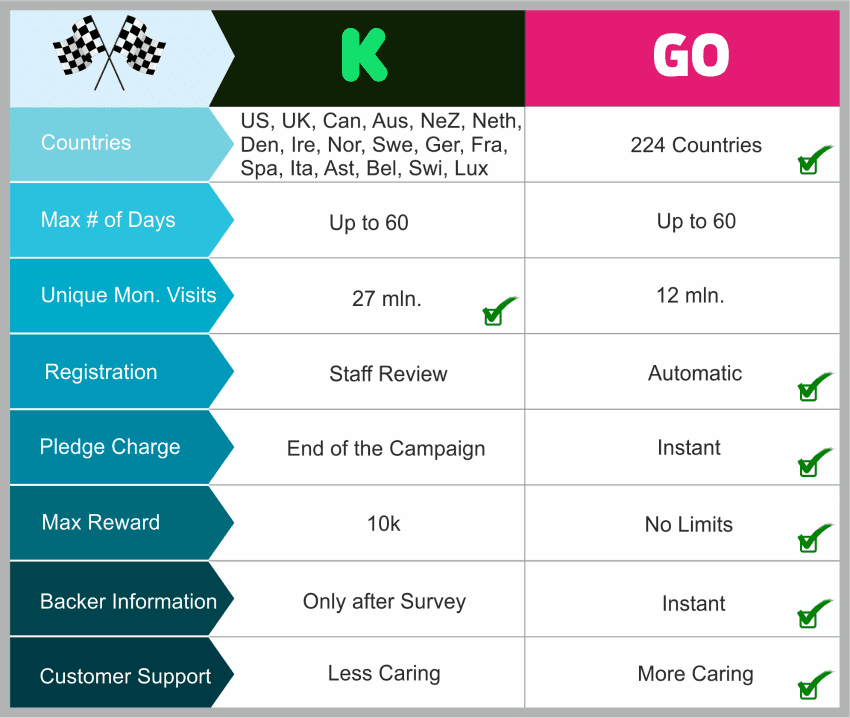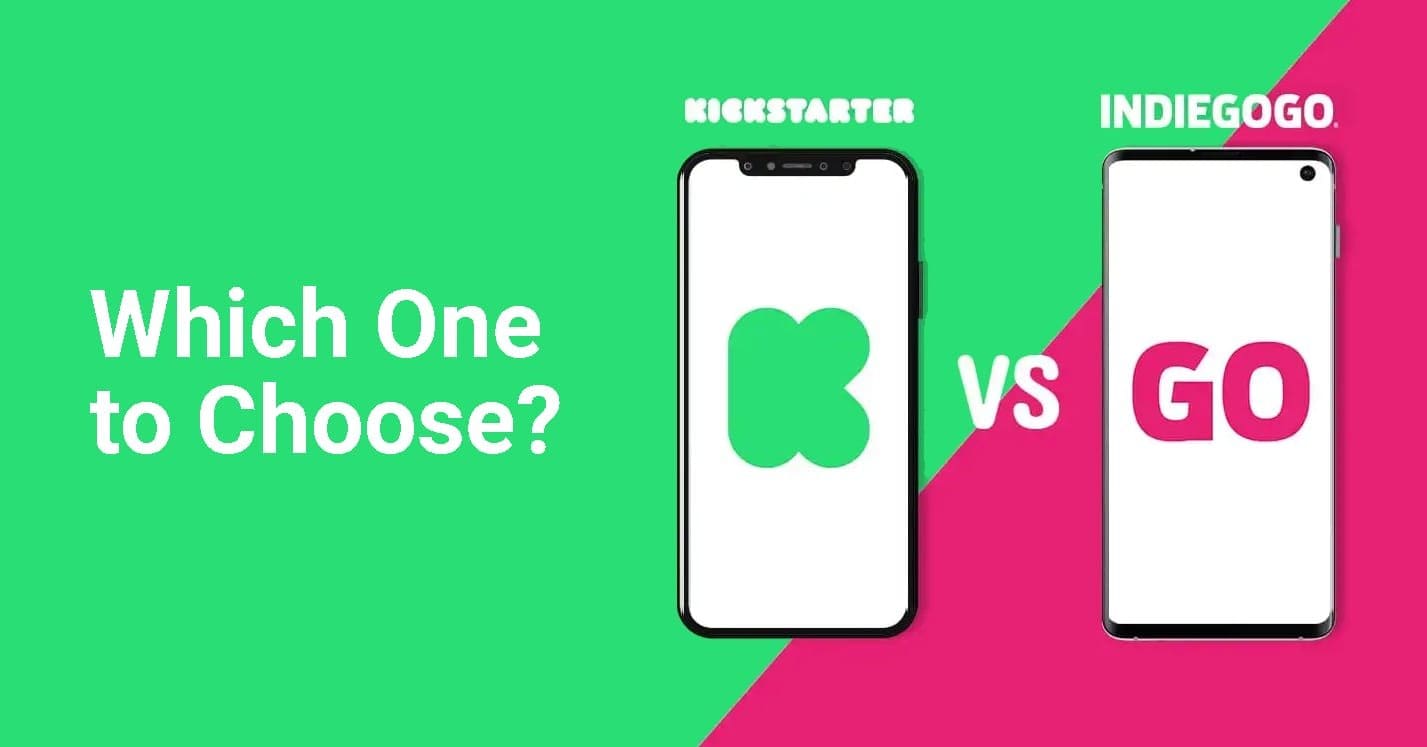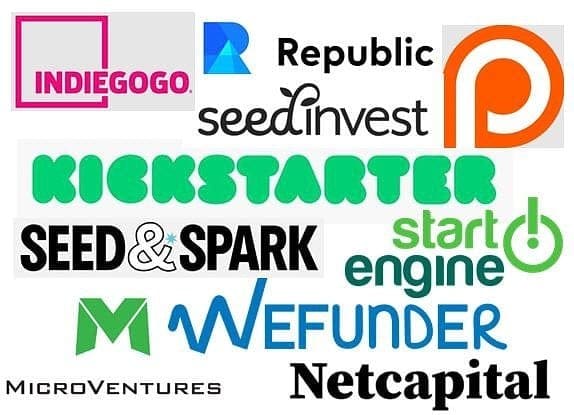When it comes to crowdfunding, deciding between Indiegogo and Kickstarter can feel like a daunting task. With both platforms offering unique opportunities for creators and backers alike, it's important to understand the pros and cons of each before making your choice. From the flexibility of Indiegogo to the community-driven nature of Kickstarter, this article provides a comprehensive look at the differences between the two, helping you make an informed decision on which platform suits your project best.

This image is property of blog.thecrowdfundingformula.com.
Funding Models
All-or-Nothing Model (Kickstarter)
Kickstarter operates on an all-or-nothing funding model, which means that if the project does not reach its funding goal within the set timeframe, all the pledged funds are returned to the backers, and the project receives no financial support. This model can be advantageous as it provides a sense of security to the backers, knowing that their funds will only be used if the project is fully funded. It also serves as a motivator for project creators to promote their campaigns vigorously and reach their funding goals.
Flexible Goal Model (Indiegogo)
In contrast, Indiegogo offers a flexible goal funding model, where project creators have the option to receive the funds raised, even if they do not reach their original target. This model provides more flexibility and allows projects to still receive some financial support, even if they fall short of their initial goals. It can be particularly beneficial for projects that have a relatively lower funding target or are confident in their ability to attract backers, as it provides them with the opportunity to receive partial funding.
Project Approval Process
Kickstarter's Stringent Approval Process
Kickstarter has a stringent approval process in place to ensure that only projects with a high likelihood of success are allowed on the platform. Each project is reviewed by Kickstarter's team to assess its feasibility, creative merits, and compliance with their guidelines. This rigorous screening process helps maintain the quality and credibility of the projects featured on Kickstarter.
Indiegogo's More Lenient Approval Process
Indiegogo, on the other hand, has a more lenient approval process, allowing a wider variety of projects to be listed on their platform. While they do have guidelines in place, they generally have a more open approach to accepting projects. This more relaxed approval process can be advantageous for creators who may have unconventional or niche projects that may not meet Kickstarter's stricter criteria.
This image is property of lh3.googleusercontent.com.
Fees and Costs
Kickstarter's Fee Structure
Kickstarter charges a fee of 5% of the total funds raised, which covers their operational costs and platform maintenance. Additionally, Kickstarter also utilizes third-party payment processors such as Stripe to handle the payment processing, which charges a transaction fee of approximately 3-5%.
Indiegogo's Fee Structure
Indiegogo, on the other hand, operates with a tiered fee structure depending on whether the project reaches its funding goal or not. If the project reaches its goal, Indiegogo charges a 5% fee on the total funds raised. If the project does not reach its goal, the fee increases to 9% instead. Indiegogo also has additional fees for payment processing, which can range from 2.9% to 4.4% depending on the payment method and location.
Additional Costs and Fees
It is important to consider the additional costs and fees that may arise during the crowdfunding process. For both platforms, creators should take into account fees charged by payment processors, shipping and manufacturing costs, as well as any taxes or duties that may apply to their products. Careful budgeting and planning are essential to ensure that the campaign's financial needs are adequately met.
Global Reach
Kickstarter's International Presence
Kickstarter has a strong international presence, with projects being able to be launched and backed from various countries around the world. This global reach enables creators to access a larger pool of potential backers and expand their project's visibility to a diverse audience. Kickstarter also provides localization tools and support to help creators tailor their campaigns to different regions and languages.
Indiegogo's Global Accessibility
Indiegogo, similar to Kickstarter, has a global reach, allowing projects from different countries to be listed on their platform. Indiegogo has been particularly successful in expanding into international markets, with localized versions of their platform in multiple languages. Their global accessibility enables creators to reach a wide audience and tap into different market demographics.
This image is property of lh3.googleusercontent.com.
Campaign Duration
Kickstarter's Set Timeframe
Kickstarter campaigns have a set duration, typically ranging from 30 to 60 days. This fixed timeframe creates a sense of urgency for both creators and backers, encouraging them to actively promote and support the project within the allotted time. The predetermined campaign duration also helps ensure that projects do not linger indefinitely on the platform, maintaining a sense of momentum and excitement.
Indiegogo's Flexible Campaign Durations
Indiegogo offers creators the flexibility to choose their campaign duration. Creators can opt for shorter or longer campaign periods depending on their project's needs and goals. This flexibility allows for a more tailored approach and can be advantageous for projects that require a specific timeframe to maximize their chances of success. However, creators should still be mindful of maintaining a sense of urgency and actively promoting their campaign within the chosen duration.
Crowdfunding Success Rates
Success Rates on Kickstarter
Kickstarter has a reputation for having a higher overall success rate compared to other crowdfunding platforms. While success rates can vary depending on the project category, Kickstarter's stringent approval process and all-or-nothing funding model contribute to a higher chance of success for projects launched on their platform. This can be reassuring for potential backers, knowing that their support is more likely to result in the project's successful realization.
Success Rates on Indiegogo
Indiegogo, with its more lenient approval process and flexible funding model, tends to have a lower success rate compared to Kickstarter. However, it is important to note that success rates can still vary depending on the project's category and the efforts put into promoting the campaign. While the success rates may be lower on Indiegogo, the platform's global accessibility and flexible funding options can make it a viable choice for certain projects.

This image is property of fastercapital.com.
Backer Demographics
Kickstarter's Backer Demographics
Kickstarter has a diverse community of backers, ranging from early adopters and tech enthusiasts to art aficionados and passionate supporters of creative projects. Kickstarter campaigns often attract backers who appreciate innovative ideas and unique products. This diverse demographic can be advantageous for projects that target specific niches or have a creative appeal.
Indiegogo's Backer Demographics
Indiegogo's backer demographics are also diverse but tend to have a stronger focus on tech-related projects. The platform has a reputation for supporting projects in fields such as technology, gadgets, and innovative startups. Backers on Indiegogo are often tech-savvy individuals who are excited by cutting-edge ideas and are willing to take risks by supporting early-stage ventures.
Campaign Promotion and Marketing
Kickstarter's Built-in Network and Discoverability
Kickstarter provides creators with a built-in network and discoverability features that can help boost campaign visibility. The platform's curated sections and trending categories can attract potential backers who are actively searching for new projects to support. Kickstarter also has a strong community of backers who actively engage with projects and share them with their networks, providing a valuable avenue for organic promotion and exposure.
Indiegogo's Marketing Tools and Support
Indiegogo offers various marketing and promotion tools to help creators reach a wider audience. These tools include marketing consultations, email marketing, and social media integrations, which can assist in building campaign awareness and attracting potential backers. Additionally, Indiegogo provides access to an extensive network of media partners and influencers who can help generate publicity for campaigns. These marketing resources can be beneficial for creators seeking additional support in promoting their projects.

This image is property of blog.thecrowdfundingformula.com.
Payment Processing
Kickstarter's Stripe Payment Processing
Kickstarter utilizes Stripe as its payment processor, which offers secure and reliable payment processing for backers. Stripe ensures that transactions are handled securely and smoothly, providing a seamless payment experience for both creators and backers. This trusted payment processing system adds a layer of credibility and reassurance for backers, contributing to a higher level of trust in the Kickstarter platform.
Indiegogo's Multiple Payment Processors
Indiegogo offers creators the option to choose between multiple payment processors, providing flexibility and catering to different project needs. Creators can select from payment processors such as Stripe, PayPal, and more, depending on their preferences and the regions they wish to operate in. This variety of payment options can be advantageous for creators and backers who have specific payment preferences or limitations.
Post-Campaign Support
Kickstarter's Dedicated Support
Kickstarter provides dedicated support to creators throughout the campaign and post-campaign phases. They offer resources and guidance on project fulfillment, including shipping, manufacturing, and customer service. Kickstarter's support team is readily available to address any issues or questions that may arise, ensuring that creators have the necessary assistance to successfully deliver on their commitments to backers.
Indiegogo's InDemand and Marketplace
Indiegogo offers post-campaign support through its InDemand program, which allows projects to continue accepting pledges even after the initial campaign ends. This extended period of support enables creators to raise additional funds and continue refining their products. Additionally, Indiegogo has a marketplace where successfully funded projects can showcase and sell their products to a wider audience, providing ongoing opportunities for creators to generate revenue and maintain contact with their backers.
In conclusion, both Kickstarter and Indiegogo offer unique features and advantages for creators seeking to crowdfund their projects. Kickstarter's all-or-nothing funding model, stringent approval process, and strong community can provide a sense of security and increased chances of success. On the other hand, Indiegogo's flexible funding options, more lenient approval process, and marketing resources can be beneficial for projects that require more flexibility or target tech-related niches. Ultimately, the choice between the two platforms should depend on the specific needs and goals of each project, weighing the pros and cons to determine the best fit for crowdfunding success.





